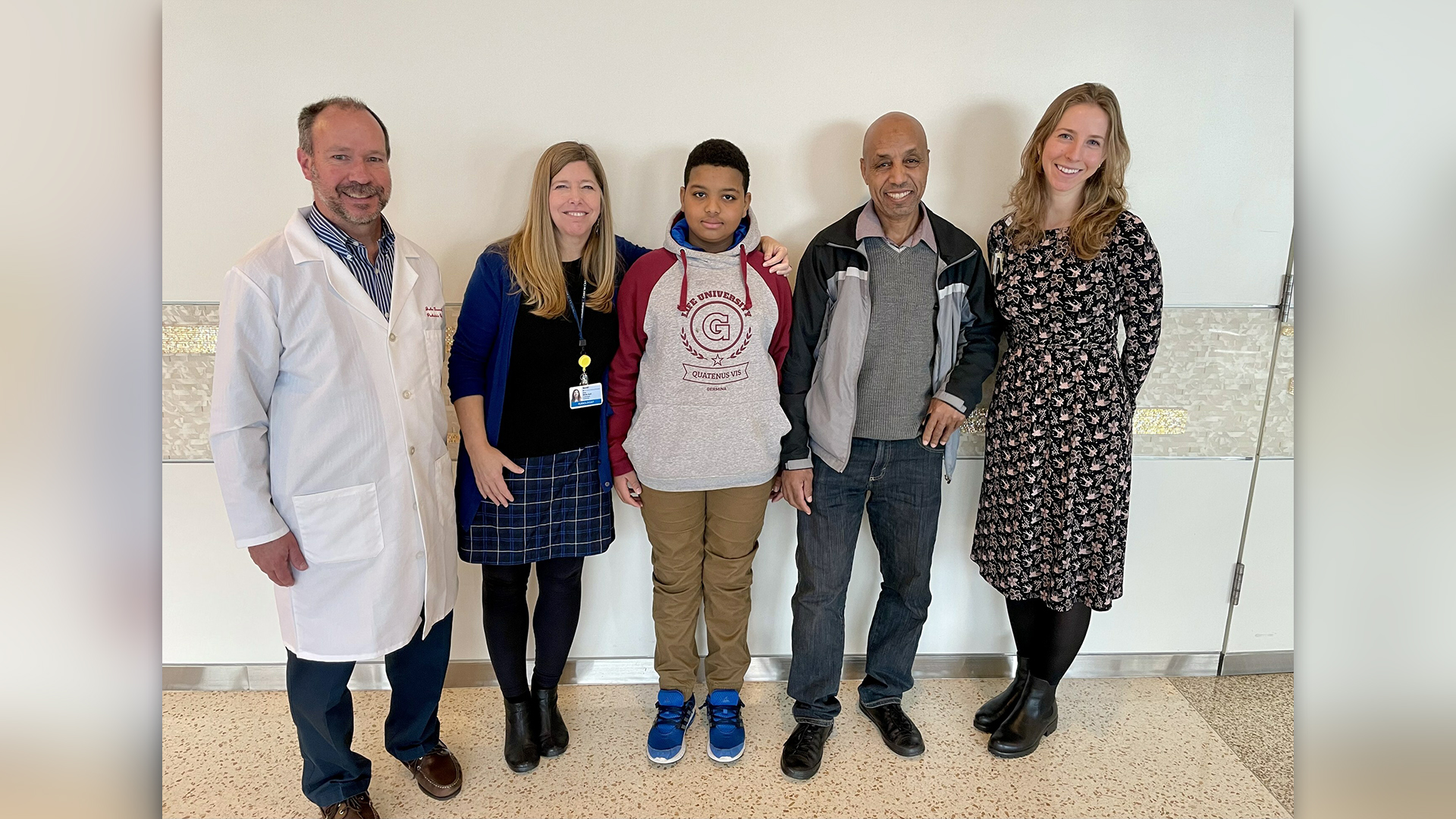
Several children born with a rare, inherited form of deafness can now hear thanks to two new gene therapies, clinical trial results show.
Both therapies target the gene for otoferlin, a protein in the inner ear that lets nerve cells translate vibrations from sound into electrical signals that can be interpreted by the brain. Mutations in the otoferlin gene cause about 1% to 8% of cases of congenital deafness, in which a child is born deaf. Still, mutations in the gene are fairly rare, affecting an estimated 200,000 people worldwide.
The new gene therapies use harmless, modified viruses to deliver working otoferlin genes directly into the inner ear. Early data suggest that the treatments work for most patients — although much more research is needed to get the therapies fully approved.
"The results from this study are truly remarkable," Zheng-Yi Chen, an associate scientist at the Eaton-Peabody Laboratories at Mass Eye and Ear and an associate professor at Harvard Medical School, said in a statement. "We saw the hearing ability of children improve dramatically week by week," said Chen, who is involved in one of the trials.
Related: Gene-therapy drops restore teen's vision after genetic disease left his eyes clouded with scars
Chen and colleagues' trial results were published Wednesday (Jan. 24) in the journal The Lancet. They will also be presented Feb. 3 at the annual meeting of the Association for Research in Otolaryngology (ARO).
The trial included six children who were treated at a hospital affiliated with Fudan University in Shanghai. All of the kids had two mutant copies of the otoferlin gene, and they had complete hearing loss prior to treatment. They ranged from 1 to 6 years old.
The gene therapy they received contained adeno-associated viruses — a type of virus often used for gene therapy — whose genes had been scooped out and replaced with the otoferlin gene. Because of the otoferlin gene's large size, though, the scientists actually split its genetic material in half, placing each half in its own viral vessel. The researchers had previously tested the safety and effectiveness of this treatment in animals, including mice and nonhuman primates.
During the trial, each child had the gene therapy injected into one ear, through a membrane that separates the middle ear from the inner ear. All but one of the children showed "robust hearing recovery" within 26 weeks. These hearing improvements began to appear about four to six weeks post-treatment, along with improvements in the kids' speech perception.
Three of these five children had a cochlear implant in their untreated ear. These implants help improve hearing by essentially bypassing the inner ear, giving sound another way to reach the brain; they can allow children with otoferlin-related deafness to hear some sound, but the quality isn't as rich and full as it could be.
After treatment, these three children were better able to perceive speech and verbally communicate in person or over the phone with their implants switched off. The two remaining children without implants went from not being able to perceive speech at all to hearing it for the first time.
The treatment didn't cause any serious side effects, although there were some milder, temporary effects, such as fever and transient changes in white blood cell count, the researchers reported. However, further studies with larger groups of children are still needed to figure out what dose of the one-time therapy works best and is safest, they added.
The six children in the Fudan University trial were treated between October 2022 and June 2023. More recently, in the U.S., a trial of a very similar gene therapy began.
On Oct. 4, 2023, an 11-year-old boy named Aissam Dam became the first person treated in the U.S. trial, The New York Times reported. He was treated at the Children's Hospital of Philadelphia (CHOP), one of several sites testing the new gene therapy made by an Eli Lilly subsidiary called Akouos.
During Aissam's procedure, doctors partially lifted one of his eardrums and inserted a medical device into a membrane that separates the middle ear from the inner ear, CHOP representatives announced Tuesday (Jan. 23). This device delivered the gene therapy to the inner ear cells. Now, about four months out from treatment, Aissam went from being profoundly deaf in the treated ear to having only mild to moderate hearing loss.
"There's no sound I don't like," Aissam told The New York Times via an interpreter. "They're all good."
Again, Aissam is only the first child treated with the therapy in the U.S. His initial results — which will also be presented at the upcoming ARO meeting — now clear the way for the trial leaders to test the treatment in younger kids, who may have a better chance of acquiring spoken language afterward.
Meanwhile, trials of similar gene therapies are ongoing or about to begin in China and Europe, the Times reported.
This article is for informational purposes only and is not meant to offer medical advice.
Ever wonder why some people build muscle more easily than others or why freckles come out in the sun? Send us your questions about how the human body works to community@livescience.com with the subject line "Health Desk Q," and you may see your question answered on the website!







